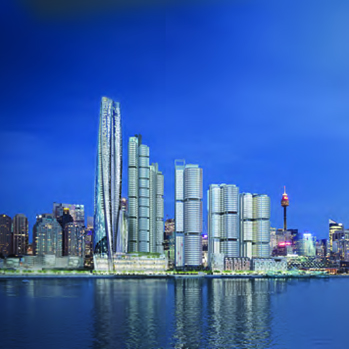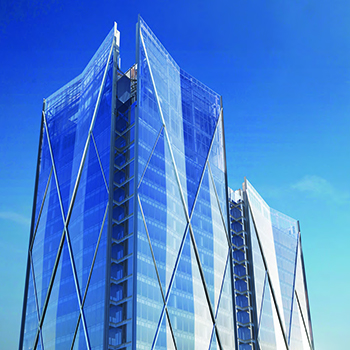Filter by
Note: As this project is under construction, the data is based on the most reliable information currently available. This data is thus subject to change until the building has completed and all information can be confirmed and ratified by the CTBUH.
You must be a CTBUH Member to view this resource.
One Barangaroo
Crown Sydney Hotel and Resort, Crown Towers Sydney, Barangaroo South Pier Hotel
Building
Under Construction
residential / hotel
concrete/steel
271.3 m / 890 ft
75
4
82
349
610
24
77,500 m² / 834,203 ft²
Usually involved in the front end design, with a "typical" condition being that of a leadership role through either Schematic Design or Design Development, and then a monitoring role through the CD and CA phases.
The Design Engineer is usually involved in the front end design, typically taking the leadership role in the Schematic Design and Design Development, and then a monitoring role through the CD and CA phases.
Other Consultant refers to other organizations which provided significant consultation services for a building project (e.g. wind consultants, environmental consultants, fire and life safety consultants, etc).
Material Supplier refers to organizations which supplied significant systems/materials for a building project (e.g. elevator suppliers, facade suppliers, etc).
You must be a CTBUH Member to view this resource.
Usually involved in the front end design, with a "typical" condition being that of a leadership role through either Schematic Design or Design Development, and then a monitoring role through the CD and CA phases.
The Design Engineer is usually involved in the front end design, typically taking the leadership role in the Schematic Design and Design Development, and then a monitoring role through the CD and CA phases.
The main contractor is the supervisory contractor of all construction work on a project, management of sub-contractors and vendors, etc. May be referred to as "Construction Manager," however, for consistency CTBUH uses the term "Main Contractor" exclusively.
Other Consultant refers to other organizations which provided significant consultation services for a building project (e.g. wind consultants, environmental consultants, fire and life safety consultants, etc).
Material Supplier refers to organizations which supplied significant systems/materials for a building project (e.g. elevator suppliers, facade suppliers, etc).
CTBUH Study Examines Tallest Buildings with Dampers
22 August 2018 - CTBUH Research

30 October 2017 | Sydney
Chris Wilkinson of Wilkinson Eyre Architects is interviewed by Chris Bentley during the 2017 CTBUH Australia Conference.
 3XN_Adam Mørk2.jpg)
30 October 2017
Connecting the City: People, Density & Infrastructure
CTBUH 2017 Conference Speakers
The future of humanity on this planet relies on the collective benefits of urban density; reducing both land consumption and the energy needed to construct...

30 October 2017 | Sydney
Chris Wilkinson of Wilkinson Eyre Architects is interviewed by Chris Bentley during the 2017 CTBUH Australia Conference.

30 October 2017 | Sydney
Urban Policy Towards Tall Buildings Globally: The Architect’s Perspective
Tall buildings have an important role in defining the character of the City and they help reduce urban sprawl. However, when a building rises above...

19 October 2016 | Sydney
Exploring Geometry and Form in Tall Buildings
Wednesday, October 19, 2016. Guangzhou, China. Chris Wilkinson of Wilkinson Eyre, presents at the 2016 China Conference Plenary 5: "Beyond Guangzhou: Other Settings" Using four...
 3XN_Adam Mørk2.jpg)
30 October 2017
Connecting the City: People, Density & Infrastructure
The future of humanity on this planet relies on the collective benefits of urban density; reducing both land consumption and the energy needed to construct...

17 October 2016
Crown Sydney: An Engineered Response to Sculptural Form
Crown Sydney will be located within Barangaroo South – one of three precincts on the foreshore of Darling Harbour – on the western edge of...

17 October 2016
Exploring Geometry and Form in Tall Buildings
Using four tower designs on four continents – the Guangzhou International Finance Center in China, the Crown Sydney Resort Hotel in Australia, 45 Bay Street...
Subscribe below to receive periodic updates from CTBUH on the latest Tall Building and Urban news and CTBUH initiatives, including our monthly newsletter. Fields with a red asterisk (*) next to them are required.
View our privacy policy